Matador Network's Blog, page 2247
July 4, 2014
20 overlooked US landmarks [pics]
AMERICA IS LARGE, with tons of landmark sites beyond Niagara, Mt. Rushmore, and the Statue of Liberty.
Scroll down to see inspiring photos of 20 places you might not have heard of, and the household names they’ve potentially been displaced by. 

1
Bear Butte, SD
Overshadowed by: Nearby Mt. Rushmore
Cool features: The 4,400ft igneous uplift, just north of the Black Hills, is held as sacred by the Lakota, Cheyenne, and other American Indian peoples of the region, who often make pilgrimages to the butte and leave offerings on its slopes. Respectful visitors can check it out in Bear Butte State Park.
Photo: Lars Plougmann

2
St. Augustine, FL
Overshadowed by: Jamestown, VA
Cool features: Founded by the Spanish in 1565, St. Augustine is "the oldest continuously occupied European-established city and port in the continental United States" (Wikipedia). The picture above is taken in front of the Fountain of Youth, a tribute to what Spanish explorers were looking for when they came to Florida.
Photo: minds-eye

3
Petrified Forest National Park, AZ
Overshadowed by: Nearby Grand Canyon National Park
Cool features: Adjacent to northeastern Arizona's Painted Desert, Petrified Forest is pretty colorful itself. It's also home to fossilized trees that grew 225 million years ago.
Photo: Skinned Mink

4
Angel Island, CA
Overshadowed by: Alcatraz Island, Ellis Island
Cool features: San Francisco Bay's Angel Island was the point of entry for many Asian immigrants to America. Its museum and research center make it a great place to celebrate Asian-Pacific American Heritage Month.
Photo: Franco Folini

5
Ghost Ranch, NM
Overshadowed by: The Santa Fe art scene
Cool features: The Ghost Ranch complex is a 21,000-acre retreat near Abiquiu and is where American artist Georgia O'Keeffe found much of the inspiration behind her landscape and nature paintings. Dinosaur fossils are also frequently uncovered on the property.
Photo: Randy Pertiet

6
Shoshone Falls, ID
Overshadowed by: Niagara
Cool features: This falls in southern Idaho is 45 feet taller than its world-famous counterpart in the East and fills a spillage width of 1,000 feet during runoff season. Swimming, boating, hiking, and picnicking opportunities are available.
Photo: The Shutterbugette

7
Airplane Boneyard, AZ
Overshadowed by: Real airports
Cool features: The aircraft boneyard at Davis-Monthan AFB, near Tuscon, is one of many such storage and scrap facilities in the American Southwest, where a dry climate and hard, compacted soil make it feasible to leave huge planes to sit for decades.
Photo: PhillipC

8
Indian Mounds, nationwide
Overshadowed by: An apparent educational basis in the study of Native American history
Cool features: Burial mounds scattered across the country, with high concentrations along the Mississippi, belie the idea that North American Indians never created monumental structures. The mound pictured above is just outside Columbus, OH.
Photo: spisharam

9
Great Sand Dunes National Park, CO
Overshadowed by: Colorado's mountains
Cool features: This new national park, created in 2004, is surprisingly overlooked, given it has the tallest dunes in North America and a backdrop made up of 14'ers in the Sangre de Cristo Range. It's also a great place to get started sandboarding.
Photo: knasen

10
Seattle Underground
Overshadowed by: Ground-level Seattle
Cool features: In 1889, a fire burned Seattle to the ground. To rebuild, citizens raised the city, constructing the new directly on top of the old. Matador Goods coeditor Michelle Schusterman blogs about this landmark in Before the Streets Were Raised.
Photo: zaui

11
Chetro Ketl, NM
Overshadowed by: Pueblo Bonita and the greater Chaco Canyon
Cool features: The name of the historical culture and the canyon that housed it has penetrated into public awareness much more so than one of its most intricate and well preserved pueblos, Chetro Ketl. The canyon is a national historic park, with camping open year round.
Photo: snowpeak

12
Penobscot Narrows Bridge, ME
Overshadowed by: Golden Gate, Brooklyn, and other famous U.S. bridges
Cool features: The engineering sophistication that went into the four-year-old bridge seems incongruous with its location in small-town Maine. But the coolest part is the observation post built into the western tower. It's the tallest such observatory in the world.
Photo: sskennel

13
White Sands National Monument, NM
Overshadowed by: New Mexico's archaeological sites
Cool features: New Mexico's White Sands is 275 square miles of gypsum dunes, 15 miles southwest of Alamogordo.
Photo: a4gpa

14
Palo Duro Canyon, TX
Overshadowed by: Grand Canyon
Cool features: Though nowhere near the scope of America's "grand" master, Palo Duro is the second largest canyon system in the country. It's currently protected by a Texas state park of the same name.
Photo: r w h

15
Natchez Trace Parkway
Overshadowed by: Blue Ridge Parkway
Cool features: Not nearly as mountainous as its Blue Ridge counterpart, the Natchez Trace Parkway makes for a smooth 444-mile cruise from southwestern Mississippi up to the outskirts of Nashville. It follows the path of the old Natchez Trace, which once served as a hunting and trade route for native peoples and later Europeans/Americans.
Photo: brandongreer

16
Fort Ticonderoga, NY
Overshadowed by: Gettysburg
Cool features: This strategic fort was captured by the Green Mountain Boys at the start of the American Revolution. Also overlooked is the fact that infamous traitor Benedict Arnold was instrumental in the Revolutionary forces' 1775 victory here.
Photo: Slabcity Gang

17
Shiprock, NM
Overshadowed by: Monument Valley
Cool features: Like Bear Butte, Shiprock is considered sacred by the indigenous peoples of the region. To me, it looks like that sweet mobile fortress in Krull.
Photo: bowiesnodgrass

18
African Burial Ground, NYC
Overshadowed by: New York's many other historical and cultural offerings
Cool features: In 1991, the remains of 400 Africans (both free and enslaved) were uncovered in Lower Manhattan. You can read more about the site at Collazo Projects, the blog of Matador's managing editor, Julie Schwietert.
Photo: A. Strakey

19
Great Basin National Park, NV
Overshadowed by: Yosemite, Zion, Bryce Canyon, Yellowstone, and other Western parks
Cool features: Established in 1986, Great Basin is an infant in Western national park terms. Highlights include the Lehman Caves, plenty of backcountry camping opportunities, and the oldest known trees in the world. Find it off Highway 50, just across the Utah border.
Photo: Alaskan Dude

20
McDonald Observatory, TX
Overshadowed by: Mauna Kea Observatory, HI
Cool features: The height and aridity of the Davis Mountains, located in West Texas, make for good stargazing at McDonald, one of the most powerful observatories in the country.
Photo: Chuck 55

The first time I felt independence

Photo: anurag agnihotri
I come from a long bloodline of worriers. My failure to call home once a week as a college student was often met with a downpour of panic that I’d “gotten into a car accident and died.”
My desires to work in writing were met with concerns that I wouldn’t have health insurance.
When I got a new boyfriend, it was very worrisome that he didn’t have a 401K.
Before I went whitewater rafting for the first time, I had to listen to my father tell me about his “friend” who had also gone whitewater rafting. This friend had “broken his leg and died.”
I wish I could say that this worry gene didn’t pass on to me, but I too have felt myself hugging a loved one too tightly when saying goodbye. I’ve saved countless voicemails as if they were soon-to-be artifacts. I’ve even gone so far as imagining the minute details of myself, distraught, at a funeral. What would I wear? Who would bring me? How soon would I return to work?
It’s a strange characteristic. And I’m not even a parent yet.
Throughout my upbringing, I felt glimmers of realizations. They hit me while I was riding my bike, alone, down a main road. While I was driving my ’99 Mercury Sable at 16. While I was walking down a side street, in Portland, Maine, on a late spring sunny morning.
These little epiphanies: “Wow, I exist, and I can do things.”
“Wow, I can go anywhere.”
“Wow, I have a bank account with money in it.”
These sudden realizations, always reminding me, “Wow, I’m alive,” would burst in epiphany before fizzling out with a stifling “but.”
“But my parents are expecting me home.”
“But I’m $35,000 in debt.”
“But I’m scared.”
The “but” was the reason I went straight to my local university, just 30 minutes away from where I graduated high school. And when my first year ended, I went straight back home for the summer. Even though I knew people who were spending summers away, exploring new cities, taking road trips, studying abroad, I never considered it. Because how would I get an apartment? What would I do for work? What if I missed my friends?
As my college years continued, I did eventually travel. I went to Spain to visit my grandparents in Mijas. I backpacked the northern coast of the Dominican Republic with a boyfriend. But every trip I took, every new move I made, I needed to be with someone. My travels had to be at the hand of someone else’s plans, desires, worries. The person often changed, but there had to be a person.
Maybe I finally uprooted myself years too late. Maybe I look back on my recently graduated self just like my mother did, with envy. Maybe.
When I graduated from college, the independence was overwhelming. The weight of it came down on me while I was packing up my apartment in Orono. It was so heavy that I mistook my new freedom for limitation. I hadn’t planned for it. I hadn’t gone through the necessary steps to get a job in my field. I hadn’t thought of any trip I wanted to take. And even if I had, I didn’t have anyone to go with me. I was worried.
I stopped packing and immediately drove to my parents’ house.
“I envy you,” my mom said. “You got yourself an education, and now you’re done. You can do whatever you want. We’re not worried anymore.”
She was right. I could do anything. So I moved to Bar Harbor with a girlfriend, and I more or less stayed put for two years. Still traveling on time off, still always someone else’s idea, still always returning to restaurant work in the spring.
When I ask the people around me about the first time they felt independence, most people say, “When I got my license.”
“When I graduated.”
“When I paid off my debts.”
My boyfriend says that independence struck him for good when he was 10 years old. He took his XR80 eight miles down the baseline by himself.
I just turned 25, and the first time I felt independence was four months ago in the Denver airport. I was sitting on the floor up against a wall, writing in my journal and watching the passersby move about the crisp, glassy lines of the sunny terminal. Those guys with huge, exaggerated cowboy hats were walking around smiling, giving people directions to Starbucks and the post office.
I’d just taken my first ever flight alone. I’d sat next to an elderly woman in the window seat who never once looked up from her Elizabeth Gilbert book to say hello. I’d visited Colorado out of curiosity, and instead of flying home after a long weekend I was on my way to Texas to begin a road trip. I’d quit my job. I didn’t know when I was coming back.
Maybe I finally uprooted myself years too late. Maybe I look back on my recently graduated self just like my mother did, with envy. Maybe. But either way, I did look up from the page I was writing on, and one of those sudden, faintly familiar realizations gave me another chance.
“Wow, I’m alive.”
But this time, the feeling stuck. 

How to piss off an American

Photo: gagilas
Turn us into a victim.
Ho boy, you’ve gone and done it now. You didn’t pay me back when you said you would. You took my dog! You dented my car! You left the lid off my to-go coffee cup! You sewed up my fake boobs wrong! You didn’t tell me that the moving sidewalk ends and now I stubbed my toe! It might be broken. I HAVE BEEN VICTIMIZED! I AM VERY UPSET AND I DEMAND AN APOLOGY! Cash or check will be fine.
Question: How can you tell an American is mad at you?
Answer: He calls his lawyer.
We are a sensitive people. We are also quite shrewd, having learned that if we make a big enough fuss, someone might pay us for our pain. Before I moved to Japan, I had failed to realize just how prevalent suing is in American culture. While in Japan, when a student of mine told me about a fatal accident at his steel factory, my immediate thought was: “lawsuit.” Then the student told me that the parents of the deceased worker had thanked him for handling the death elegantly.
“No lawsuit?” I asked. “No,” he replied. “Why would there be? It was an accident.” I’m still a bit shocked. I mean, didn’t those poor parents realize that millions of yen would make the untimely death right? Someone should tell them. Maybe I will.
Take away our food options.
One of the most beautiful things about capitalist American culture is plentitude and the prevalence of choice. Even in the midst of a bleak economic depression we still have more food than we know what to do with. We have so much goddamn food here, you really can have it “Your Way, Right Away!”
Want romaine lettuce instead of spinach? Gluten-dairy-peanut-animal-free dressing on the side? Five pieces of bread on your sandwich instead of two? Whole grain spaghetti instead of good-tasting spaghetti? Well, you have come to the right country, my friend! Our restaurants are well-trained to counsel you through whatever eating anxieties you may have, whip up an appropriate dish to your exact specifications, and then serve it to you in a trough.

More like this: How to piss off someone from New Jersey
For an American, the trouble starts when you remove those choices. Maybe the restaurant is out of non-milk milk and grass. Maybe you’re in a foreign country where a “vegetarian” plate means chicken salad and every menu item is not endlessly customizable. But I have a water allergy. I don’t like blue-colored foods. What do you mean they don’t have Super Size? What the hell am I supposed to do now?!
Use racial epithets.
Oh, don’t get us wrong, we Americans can be just as racist as the next culture…we just hide it a lot better. Political Correctness — the late-20th-century backlash to old-school racism and bigotry — has pervaded our collective consciousness to the point where, in many cases, our gentlest euphemisms for race, medical conditions, and religion have become insults (except when it comes to making fun of whitey; you can do that all you want and it’s totally cool).
Even when we’re “chill” enough to be able to poke fun at the charming differences between the members of our multicultural group of friends, one of the quickest ways to make us squirm is to drop an outdated cultural epithet and mean it. My brother is dating an oriental girl. Is there a bathroom for cripples here? Hey, sweetheart, mind being a good little girl and passing me the stapler, if it’s not too heavy for you? Wouldn’t want you to ruin your manicure. NOT cool, buddy. Not cool. The day my Irish ex-boyfriend recited the traditional version of eenie meenie miney moe1 in front of me and another American, we almost shit our pants.
1“Tiger” is replaced with a word that rhymes better with the Pooh character Tigger’s name. And oh, it begins with an n.
Tell us we can’t have something.
There’s an insidious problem sweeping the current generation: entitlement. Today’s American children are being taught that there are no winners or losers in life, that they are inherently wonderful because they were born that way, and that each of us merits the very best.
These are, individually, lovely sentiments, but if applied carelessly, what do they get you? A generation of people who don’t understand what it is to work for what they want. People who always want special treatment. People who will go into debt for a plasma screen TV because, well, don’t they deserve HD? Tell an American they didn’t get the job, that there are no holiday bonuses this year, that they can’t get the iPad 3 before Easter, and you’re risking a tantrum. High-class problems, folks. High-class problems.
Withhold tips.
Oh man, we hate this. Even if we logically understand that a tip is something a serviceperson earns for a job well done, we can’t let go of the fact that slumlord employers around America pay their employees in dirt. It’s up to us to help them, you guys. Most of us were waitresses or busboys in school, and we remember all too well how hard it is to deliver service with a smile for $2/hour. We are compassionate, we are well-trained. We want to respect people who are trying to get ahead.
American tipping culture is appalling to many other people in the world. You just tip them no matter what, even if they were rude? 25%? That’s madness. Taxi drivers? Bartenders? Why do you have to tip the hairdresser? They already make a wage. The system totally gets abused. Think of those cheeky Starbucks employees who put a tin can out for tips. Why, because they opened the register properly? How dare you! Our job is hard! Show me a job that isn’t. Maybe I’d like a tip for using nice-looking font, with an additional dollar for each joke I make. But I digress.

More like this: How to piss off someone from Michigan
To the American, a bad tipper is an asshole. On the terrible occasions where we don’t have enough cash to leave a good tip, we feel like pond scum. When I invited my Irish then-boyfriend to visit me in New York, he was furious at the idea of having to give extra money “for nothing.” How about I just give her two dollars in nickels? What? It’s the same, isn’t it? That should have been a red flag for me right there.
Require us to speak any language other than English.
These damn immigrants — they come to our country, take our jobs, and invade our culture. What is this “Press 1 for English and 2 for Spanish” bullshit? You’re in America, dammit. Speak English!
Never mind that as soon as most Americans set foot out of the country, they expect everyone else to speak their language back to them. What’s the point of learning other languages? Everyone speaks English. While the vast majority of world citizens do learn English in school and a good number of people in the tourist industry will have a grasp of business English, the assumption that “everyone” in the world speaks English is patently false (let’s leave Northern Europe out of this; they’re linguistic genius freaks).
Visit any other country and step out of the urban centers to see just how many people really speak English well. Think back to your own schooling — you were made to learn French but as soon as you left school, how much did you retain? You’re familiar with the concept of “use it or lose it.” It’s the same for everyone else. In the small Italian town where I live, very few people speak English. In my mother’s family, no one speaks English. On my father’s side of the family, only my cousins do. When I lived in Osaka, it was extremely rare to find a serviceperson who spoke English beyond “Herro” and “What you want?”
Americans don’t want to believe this. Hollywood films have taught them that foreign countries are like Epcot — full of costumed individuals who speak charmingly accented but perfect English. Honey, why is he talking at me in French? I don’t speak French. Why doesn’t he speak English? Everyone is supposed to speak English! French people are so rude! Polly-voo? Goddammit, I hate this place.
And then you get the Americans who expatriate and refuse to learn the language of their new country. It’s too hard. They can’t expect me to learn a whole new language. Why aren’t there more signs in English? There should be more signs in English. Exactly.
Tell us nothing America does is any good.
Hey, I get it — our government has done some shady-ass things and our people can be really loud and obnoxious. We don’t have thousand-year-old buildings. We don’t have a secret language that no one but us knows how to speak. Our chocolate tastes like rubber, even born-and-bred Americans are confused about what exactly constitutes our cuisine, and “traditional craftsmanship” isn’t the first word that comes to mind when you think of American exports.

More like this: How to piss off someone from Kansas
One of the things that most irritates other cultures about us is that we tend to have a narrow grasp of world events. It’s not an entirely unfair stereotype: many of us are quite bewildered to learn that, outside of our borders, we are not exactly the world’s favorite party guest. What do you mean they don’t like us? I don’t understand. But we’re nice. We gave the world Nike, Hollywood, Elvis, Michael Jackson, and the iPad. People love our shit, but they don’t like us? Well, fuck them! Americans have feelings, too, y’all.
Tell us we’re “just” American.
For centuries, immigrants who came to America felt the pressure to assimilate, to erase their roots. Names were changed, children were not taught their parents’ languages, and traditional recipes were bastardized to suit American tastes and make use of local ingredients. But in the past couple of generations, it’s become acceptable, even desirable, to have ties to other cultures — better still if you’re an “exotic” mix (I’ve heard friends glumly admit, “I’m just white”).
In our melting-pot nation, a popular question is, “What are you?” The question is meant to discover a person’s ethnic origins, but in recent generations Americans tend to equate ethnicity with culture. Americans like to hark back, identifying directly with distant ancestors they’ve probably never met. The fact that where you’re born and where you grow up — not your DNA — most directly defines your culture escapes them. Even the most die-hard “Real American” will probably tell you, “I’m British/Irish on my mother’s side and Dutch on my father’s.”
What’s so terrifying about keeping it real and calling yourself an American, anyway? The Canadians, Australians, and New Zealanders don’t seem to have this problem. There’s a widespread feeling throughout the country that we don’t have a unified culture, that we only steal from our ancestors. If this is so, then why are we some of the most instantly recognizable people on the planet?
While most of our inhabitants have ethnic roots in other continents, one thing is for sure — born and bred Americans share a unique language and accent, belief in the power of the individual, fear of serial killers and germs, firm adherence to measuring things in Fahrenheit, inches, and pounds, a love of convenience, and the unshakable knowledge that anyone can do anything they set their mind to. Yet, this is what usually happens when you tell a born-and-bred American that, culturally, they are just American:
“What are you?”
“I’m Irish and proud!”
“What? No you’re not. You’re American.”
“Excuse me?!”
“You were born and raised in America, you’ve never been to Ireland, and you have an American accent.”
‘How dare you! I’m Irish on both sides. That makes me 100% pure Irish! So what if I’ve never been there? It’s in my blood. I have red hair! I feel Irish! Who are you to tell me I’m not?”
Tread very lightly with this one. You could make a little “Polish” girl cry. 
This post was originally published on February 6, 2012.

July 3, 2014
8 lessons travelers can learn from baboons

Photo: Thomas ZUMBIEHL
PEOPLE WHO COLLECT MONKEY SHIT for a living do more than just rake in the cash. They also get a front-row seat to some great lessons on social etiquette — like watching a soap opera where everyone is covered in hair. Here are some tips I picked up during my time as a hamadryas baboon genetics researcher in Awash National Park, Ethiopia.
1. Modesty is for prudes.
Baboons have zero fucks to give when it comes to body image. Lady baboons sport flaming red estrous swellings that look like exploding whoopee cushions, and male baboons prance around with their nether regions flapping in the breeze. Genitals are out and no one is getting any side-eye about it.
The next time you’re agonizing over which swimsuit to bring on your travels, think like a baboon and don’t bother. Your pack will feel a lot lighter without a Victorian-era swim dress. Many countries allow public nudity, so let your bratwurst-induced fupa hang out.
2. Go with the flow.
Baboons are all about the bold moves. They wake up with the sun, poop copiously, and then head off in whatever direction they please. They cross miles of scrub desert in the searing heat in search of tasty leaves, delicious palm fruit, and the opportunity to surreptitiously hump a strange sir or lady in an exciting new setting. They sleep on the face of a different cliff every night, whichever is closest when the sun starts getting low in the sky.
So instead of prepackaging your travels, just wander around town stuffing your craw with local fruits and cheeses while lip-smacking at all the hot young thangs.
3. Never pass up a party.
When baboons discover something new, like the corrugated sheet metal roof that you built to protect your tent from the rain, they don’t hesitate to check it out. Baboons can take a sheet of metal nailed to four sticks and turn it into an all-night roof-deck rager, even if the downstairs neighbors are being total wangs and trying to sleep.
Unlike my home in puritanical New England, bars in most parts of the world are open all night. Take advantage! This is no time to catch up on Game of Thrones episodes in your hotel room under the guise of “getting over jet lag.” Bedazzle your fanny pack, stretch on the flight over to limber up, and get ready to freak out. A few hours later, you’ll be out at the clubs showing off your sweet monkey moves.
4. Don’t let kids cramp your style.
Baboons bring the whole family when they travel. Newborns pull their own weight right out of the womb, clinging to mom’s stomach while she forages. A few months later, a baby baboon is able to ride on mom’s back wherever she goes, entwining his tail with hers for balance.
Since human babies are barely-sentient blobs for the first year of life, throwing little Johnny on your back before sprinting to the bus may not work out so well. Wrap him in a papoose if you want to get fancy, or just stick him in your backpack. If he doesn’t have a tail, a little Velcro will work in a pinch to keep him upright.
5. Skip the Segways.
Picture a bunch of baboons driving around on Segways. They look stupid, and so do you. A baboon would never use a Segway to scale her sleeping cliff because it’s just plain lazy, and before you know it you’ve gained 30 pounds and your man is spending all his time with that skanky new female in the harem with the totally over-the-top and probably fake estrous swellings, and you deserve to be happy, okay?!
6. Pack light.
Baboons are ultralight travelers. When it rains, they use their giant manes as umbrellas, and their ischeal callosities make even the roughest rock a comfy seat. They’re too busy outwitting hyenas and dodging lions to be weighed down with unnecessary crap.
The next time you’re trying to decide how many pieces of matching roller luggage to take on your trip, take the baboon approach and streamline that shit. Leave the giant camera, Ziploc bag of jewelry, and eight pairs of shoes at home.
7. Use nonverbal communication.
Baboons are masters of body language. If you’re getting in a baboon’s personal space and he’s not really feeling it, he’ll let you know. The next time you need a little ‘me time’ on the road and your companion isn’t getting it, stare unblinkingly into his eyes while repeatedly raising your eyebrows. This move requires really growing out your unibrow for full effectiveness, which shouldn’t be an issue if you’re on board with the rest of this list.
If this doesn’t work, yawn mightily to show off your razor-sharp canines, preferably while whacking the dirt in front of you to create a badass and terrifying dust-storm. If he’s still not getting the message, charge him.
8. Make every day an adventure.
Sometimes there’s a drought, or the leader male is being a total slave driver and won’t give you any time off, or you’re short on cash because you went a little too crazy at the roof party last week. It’s okay — you don’t have to traipse all the way to the ends of the earth to have a good time. Grab a palm fruit, climb to the top of your favorite acacia tree, and just chill. Sometimes the most exotic observations happen right under your nose. 

Blood and ink in Sarajevo

Photo: Ramocchia
It boiled down to a girl.
In three short months, I’d traveled across the ocean by myself, negotiated an Eastern European capital knowing how to say little more than “thank you” and “bread” (hvala ti and hleb, if you’re curious), fallen for a beautiful young lady, and moved in with her and a great friend for a month in a cozy sublet along the Miljacka River in Sarajevo. There are, I reflected, with my feet up on the porch and a cold beer in my hand, worse ways to spend a season.
So as youthful, relative risks go, it seemed like I was on a hot streak. Why not get my first tattoo?
Katie had a ring of six little birds fluttering around her wrist, ascending to a scripted penning of Neruda and García-Lorca’s single, loaded word: Duende. She planned to add a seventh, and by that time my mind was made up.
A quick Google Maps search sent us halfway across town to the sketchier western section of Sarajevo — which, contrary to general portrayal, isn’t half as bad as your average American city. It still wasn’t pretty by any stretch; even on as cheerfully sunny a day as we had, the starved mouths of long-since gutted warehouses gaped as a stark reminder of the economic realities imparted when a country never fully recovers from a war. Every other storefront of the closest thing Sarajevo had to a strip mall sported boards across their dark interiors, many still pocked with bits of shrapnel from the ’90s. People walked about without much to do, and what little activity was going on lacked the sense of permanence that accompanies steady work.
All of which is to say, we shouldn’t have been surprised when we didn’t find the tattoo parlor.
Dejected, Katie and I boarded the tram (the tram — Sarajevo has one track) on the way home. Take two.
Another search led us to a different shop, Paja Tattoo, that gave off an altogether more comforting vibe. For one, we were reasonably sure it existed. Their website showed fresh activity, churning out pictures of new work on what seemed like a daily basis. Sweetening the deal was its fortunately proximate location, a five-minute walk to the Skenderija market.
Walking into the shop was emblematic of the Bosnian experience: The building wasn’t much, but it was decorated with life and passion. Framed sketches adorned every square inch of white plaster wall. Old curtains and common courtesy divided the waiting area from the studio itself, from which two men emerged. One couldn’t have been older than Katie or myself; the other could’ve been one of our parents.
I heard a grunt and looked up at Paja.
“Bird is dead.” Paja remarked.
The first man, Mesud, began taking down information in fluent English, while the second — Paja himself, as we gradually deduced — nodded impassively. I showed Mesud the two pictures I, for years, had wanted the sketch based off of: a raven in mid-flight. The body of one image was perfect, while the detail on the head of the other was beautiful. Mesud deftly cut the outline and snipped the head from the first one. I heard a grunt and looked up at Paja.
“Bird is dead.” Paja remarked, languidly watching the small piece of paper flutter to the ground.
There wasn’t much to say to that.
Paja traced the outline onto my shoulder, balanced the image in the crook of my elbow, and went about his work. After an initial start, I settled into steady breathing and willed my arm still. The first ten minutes were a pleasant rhythm of small talk punctuated by soft scratches against my skin, until Paja grunted and stopped.
“Eh,” he remarked offhandedly. “Too much blood.”
I whipped my head around and stared at my shoulder. The slightly reddened — but otherwise clean — outline of a raven stared back. I looked up at Paja in confusion.
With a perfectly straight face and a deadpan tone to match, he looked me in the eye. “I get two jokes,” he declared, raising a finger. “That was one.”
Paja was a jowly, middle-aged artist who went about his work with steady and methodical love. His shop was a testament to his way of life; the walls were adorned with memorable sketches and photographs of clients, and the waiting area could have been a living room if not for the mall traffic passing just beyond the window.
Like many others, Paja left Sarajevo as the wars for control of the former Yugoslavia began to escalate. Spending a bit of time in several countries in his years away, Paja iterated his experiences with all sorts of customers.
“Some men very tough about tattoos,” he said, as his deft hand shaded with remarkable precision. “Some happy about it. Some are calm. But some…” he trailed off, a faint smile on his lips. “Some cry, very squirmy. I have one man, come in for little tattoo on arm. He squirm and shake, and finally I ask, ‘Do you want…’” Paja reached for the word, then started as he found it. “‘Anesthetic?’ And man says, ‘Yes! Please!’”
As he was explaining this story, he put down the needle. At the word “please,” this man pulled out a two-foot-long black rubber club from underneath the chair and leaned over me, holding it inches from my face.
“I ask, ‘You still want?’ And he screams, ‘No, no!’” At this, Paja put the club down and let out a rolling laugh, then picked up the needle and started back in.
I could only assume that was joke number two. I was starting to like this guy.
He finished in an hour and a half and refused the tip I tried to give him. “It is for you,” he said simply, speaking volumes as he inspected his work. It felt raw, every bit the open wound a tattoo is before it heals. More importantly, it was there to stay. Katie (whose seventh bird shone brilliantly) and I left the shop, bound for home on the river. 

18 signs you're from Sydney
If the British had won
BEING THE ANGLOPHILE that I am, I often think about what life would be like if the USA had actually lost the Revolutionary War against Great Britain. There are times when I wish I had a legitimate English accent, preferred tea over coffee, and had people that laughed along with me during episodes of Black Adder, or PhoneShop, instead of staring at the screen with glazed eyes. Aside from my pseudo-crush on Stephen Merchant, this Newcastle Brown Ale advertisement is hysterical, but I have a feeling only those who appreciate dry, British humor, will think the same.
Happy July 3rd, everyone — raise a glass today, because tomorrow we’ll all be reminded of how definitely not British America is. 

5 high-end California itineraries
If you’re looking to splurge, you’ve come to the right place. California is the land of gold, and not just in the northern prospector territory. There are high-end itineraries to be found everywhere — where are you gonna go first?
1. City of Angels

Photo: Ben K Adams
Every hotel in Los Angeles has some kind of storied history of celebrity heartbreak and redemption, making them automatic high-end destinations. Chateau Marmont, for example, is extremely famous for its no-picture policy, its bungalows with private pools, and the hordes of paparazzi waiting to see who comes outside. But the hotel itself is more historic than lavish. Sunset Tower Hotel, on the other hand, has earned its place as the perennial host of Vanity Fair’s Oscar after party. Its restaurants, Tower Bar and The Terrace, are fantastic — for those into the ‘20s Oscar glam, the Terrace is one of the few places in LA where you can still smoke.
The city’s wealth of rooftop bars — the Standard, Mondrian, Perch, etc. — have awesome views and drink prices to match. During the day, the Getty Villa stands as a miniature Hearst Castle (don’t worry, you’ll see the real thing soon) filled with high-end art. Los Angeles is also one of the best destinations for food in the world, but if you’re really going all out, head to Totoraku. It’s hard to find — there’s no sign to mark the restaurant, and you need to be personally invited just to eat there. But exclusivity is a seasoning everybody craves, and every cut of beef placed in front of you is world-class.
Disneyland is obviously a popular destination for anybody visiting Southern California. If you’re traveling with kids, drop them off at the hotel and seek out Club 33. It’s a members-only club with a two-year wait and five-digit initiation fees, but like Totoraku, if you can find somebody to get you in, it’s worth a visit. It’s also the only place in Disneyland that serves alcohol (don’t forget, you can always just head over to California Adventure across the street).
2. Central Coast
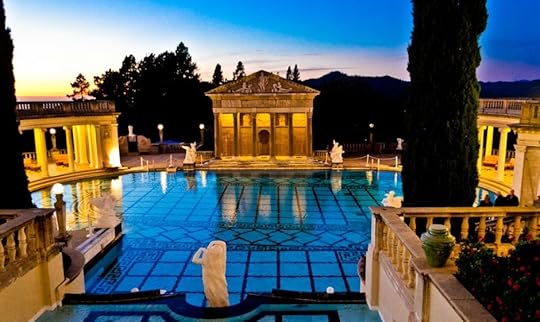
Neptune Pool at Hearst Castle. Photo: sheldonsmith
The Central Coast is a land of transition, the long link between the fast-paced debauchery of Southern California and the retreats of the foggy North. But more than that, the Pacific Coast Highway that forges this path is an itinerary in itself, one of the world’s premier road trips. Start in Santa Barbara and take a nice long look at your last view of Southern California. The Biltmore comes with access to Coral Casino, while The Bacara Resort and Spa is a good way to spend your final days in the sun. It’s one of the few five-diamond hotels around, with beaches, reserves, and golf courses. If it’s good enough for Oprah’s birthday party, it’s good enough for you.
The PCH winds up the coast through Big Sur, also known as one of the most beautiful coastlines in America (maybe the world). Take note when crossing the Bixby Canyon Bridge — you’ve probably seen it in movies and photos a hundred times, but it’s easy for the beautiful scenery to distract you enough that you’ll miss it. If you want to stop for the night, do so at the Post Ranch Inn, right in the heart of Big Sur. But if you really want to see what it means to live luxuriously, don’t miss the Hearst Castle in San Simeon. The Neptune Pool alone makes Mount Olympus look like Mount Whitney.
End your road trip in the Monterey town of Carmel-by-the-Sea, famous for its strange footwear laws and being formerly governed by Clint Eastwood. For your accommodation, stay at L’Auberge Carmel, an old hotel with so much elegance even Hearst Castle struggles to keep up. The town is all about that early-20th-century class — if you’ve timed your trip right, you’ll be in Carmel just in time to see the Pebble Beach Concours D’Elegance, where every great car from the Bentley to the only extant Phantom Corsair is paraded through town. If your trip dates miss the show, you’ll have all the more time to spend on the Pebble Beach Golf Links, objectively one of the most gorgeous courses in the world.
The PCH passes through San Francisco, but for your next trip, you’ll be heading a bit farther north.
3. Wine Country

Napa Valley wine. Photo: Omar G!
While San Francisco is always worth a visit, the wine fields of Napa Valley are the calm retreat from the hustle of city life — the Ricky to San Fran’s Lucy, if you will. It’s a chance to focus less on the sights and sounds around you and more on the smells and tastes.
To that end, the best accommodation is at Auberge du Soleil. Once simply a world-class restaurant, it’s now expanded into a world-class resort and one of Napa’s best culinary destinations. There’s also Bardessono, the only hotel in California that’s LEED Platinum certified due to its commitment to sustainability. And don’t overlook Solage Calistoga. It’s more modern than the other options, but when you’re sporting a Michelin-starred restaurant and your spa is ranked #1 in the Americas and the Caribbean, maybe it’s okay to try something new.
Napa Valley itself is a land of rolling rainbow hills, dotted by wineries and small towns, each and every one of them offering something new. It’s easy enough to tour — there are only a few roads that cut through the area (the 29, the 12, the 101), so visiting is just a matter of choosing a route and driving until you find a viewpoint or pull-off worth stepping on the brakes for.
Special mention needs to be given to The French Laundry, a small restaurant operating out of the town of Yountville. Unassuming from the outside, The French Laundry requires reservations months in advance, and for good reason — it’s a constant contender for the best restaurant in the entire world. Thomas Keller, the mind behind the French-American cuisine, is the only American chef to be awarded three Michelin stars for two different restaurants simultaneously. If you can score a table, it’s worth a trip all on its own.
4. High Sierra
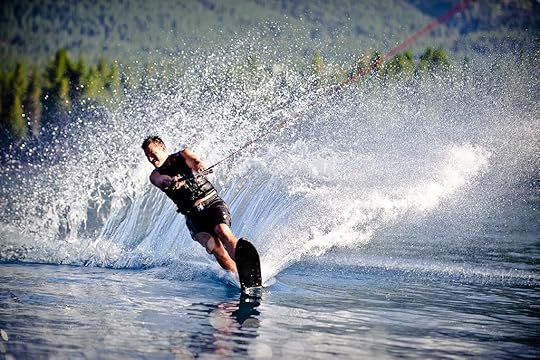
Skiing Lake Tahoe. Photo: Sean O’Shaughnessy
The California coast normally gets all the love. Hell, look back at what you’ve read so far. But once you venture far enough inland that there’s no more salt on the wind, California transforms from a land of sand into the kind of landscape even Ansel Adams had trouble conveying.
Yosemite National Park is arguably the High Sierra’s biggest gun — you may remember it as the place Jeff Daniels called the only good thing about America in The Newsroom. It’s celebrating its 150th birthday this year, so Half Dome is worth a visit. You should consider backpacking and camping through the park regardless of the budget you’re traveling on, but for a lux spot to come back to after an epic 10-hour hike, you can’t beat the Ahwahnee Hotel.
Next, get yourself north to Lake Tahoe. The mountain lake is cold, but when you’re being towed on a wakeboard and watching evergreens reflected in the glassy water, you probably won’t mind. The wetsuit you’re wearing will help too. And while there are camping opportunities and independent cabins aplenty in the area, you’ll probably want to check out the Resort at Squaw Creek or the Ritz at Northstar and book a massage to help work away the soreness from a day on the water.
If winter sports are more your scene, or if you watched Johnny Tsunami one too many times and liked the idea of snowboarding a day after you went surfing, head to Mammoth Lakes. Home to Mammoth Mountain, it’s one of those places tourists are surprised to find out actually does have snow, plus pretty awesome ways to ride it. Though renting a cabin is the best way to experience the beauty of nature in the area, simply walking down the street through town will yield legions of high-end hotel options with penthouse views of the mountains.
If you follow your current trajectory, you’re gonna bump through Death Valley and Joshua Tree National Parks — take your time — before finding yourself back in the desert cities of Southern California. Just in time to end your trip with a bang.
5. Coachella / Palm Springs VIP

Pharrell Williams at Coachella 2014. Photo: Shawn Ahmed
People, myself included, have long proclaimed that camping is the only true way to experience the Coachella Valley Music and Arts Festival. How do you take that sentiment and turn it high-end? The answer is the Safari Tent. For $7,000, you’ll be given a personal clothe palace by a manmade lake five minutes from the festival entrance that includes two queen beds and personal hot shower. You’ll wake up every morning feeling like a prince. So will the actual prince sleeping two tents over.
The festival itself includes VIP areas (accessible with a $799 wristband) with premium access to the stages and fully stocked high-quality bars, and this is where you may just bump elbows with some of the same people you’ve been cheering onstage. One of these areas features a Rose Garden where a $225 “Outstanding in the Field” four-course dinner is put on by Michelin-starred chefs in the afternoon.
When the festival is over, you’ll be in prime real estate to hit up Palm Springs, a longstanding desert oasis for the rich and famous. The choice hotels are Parker Palm Springs, a retro Wonderland, and The Ace, where you can relax after a long weekend of dancing — or keep it going. Add in a few more days of recovery time at Palm Springs’ numerous day spas, golf courses, and tennis stadiums, and you’ll head home with an afterglow that lasts for months. 
* * *
 Our friends at Visit California asked Matador how we #dreambig in California. This post is part of a series we’re publishing to answer that question. Click here for more.
Our friends at Visit California asked Matador how we #dreambig in California. This post is part of a series we’re publishing to answer that question. Click here for more.

#MatUTalks July 10, 2:30pmEST
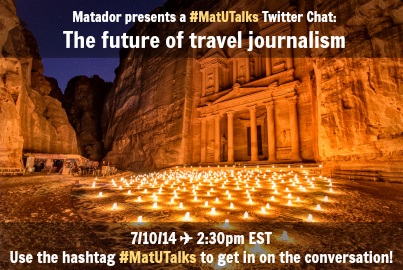
Photo via MatadorU student Sebastien Beun
ON JULY 10, 2014 at 2:30 EST, MatadorU will be hosting its fourth Twitter chat. We’ll be talking with MatadorU faculty, students, Matador editors, and many others, around the topic of the future of travel journalism. You can join us by following our Twitter profile, and sending in replies using the hashtag #MatUTalks.
Additionally, we will be giving away a prize during our chat! One lucky participant will receive a 1 hour personal review with Matador Senior Editor and MatadorU Director of Curricula, David Miller. This is your chance to score a personalized session devoted to a travel journalism topic if your choice! The winner will be selected at random from those using the hashtag #MatUTalks.
We are soliciting questions surrounding the topic of where the future of travel journalism may lead us. We’ll be choosing six questions to help facilitate the chat, so if you’d like a chance at being featured, leave your question in the comments section below. MatadorU students can also leave their questions and responses in the U forums. We look forward to chatting with you on July 10!

Road tripping the Southwest [pics]
WHEN A LIFELONG EAST COASTER like myself goes out to the American Southwest, we find ourselves thinking, “Is this even America?” The land in the Southwest is so utterly different and strange to the East Coast of small hills, cities, and humid summers that it can feel like an entirely separate country at times.
It’s also probably one of the most consistently beautiful places in the country. Over a third of the nation’s national parks are in the states of Colorado, New Mexico, Utah, Arizona, Nevada, and California, and some of the most unique cities in the country are west of the Rockies as well.
While the stereotype of the area is that it’s all barren desert — which isn’t entirely inaccurate — there’s a lot more variation and personality in the Southwest than the backdrops of Wile E. Coyote and Road Runner cartoons would suggest. Next time you decide to hop in your car for a trip around the country, here’s why you should hang out in the Southwest. 

1
Joshua Tree National Park
Joshua Tree is in California on the edge of the Mojave and Colorado Deserts. It’s known for its eponymous yucca trees, which were named by the Mormons for their resemblance to the Biblical character Joshua reaching his arms up in prayer.
Photo: Rennett Stowe
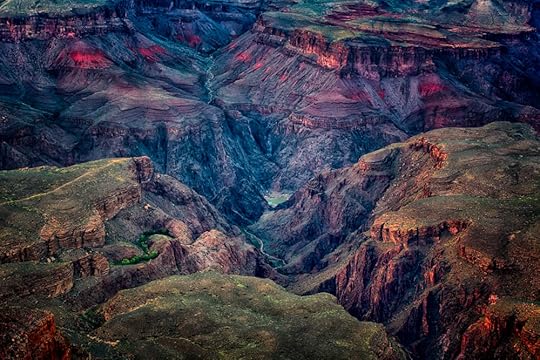
2
The Grand Canyon
The Grand Canyon sits along the Colorado River in northwestern Arizona and is possibly one of the best-known natural wonders of the world. No trip to the Southwest is complete without it. If I may make a suggestion: If you go to Boulder City, Nevada, there are a number of helicopter companies who will take you and your friends on helicopter tours out over the canyon. It’s truly a once-in-a-lifetime experience...unless you’re a helicopter pilot, in which case it could be a pretty frequent experience.
Photo: Stewart Baird

3
Route 66
A large portion of “The Mother Road” runs through the American Southwest. Route 66 starts in Chicago and runs all the way to Los Angeles, cutting through New Mexico and Arizona, all Americana and old-school kitsch. Though the route has technically been defunct for years now, many hardier road trippers will drive portions of it and visit the old towns along its path.
Photo: Randy Heinitz
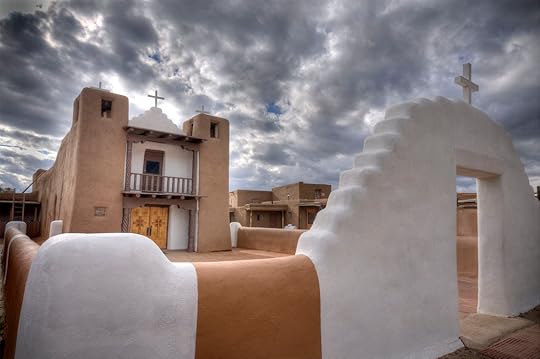
4
Taos
The Taos Art Colony has made the New Mexico mountain town an artistic hub. To the north is the Taos Pueblo, a 1,000-year-old community believed to be one of the oldest continuously inhabited settlements in the United States. This picture is of the San Geronimo Chapel in the Taos Pueblo.
Photo: Tim Hamilton
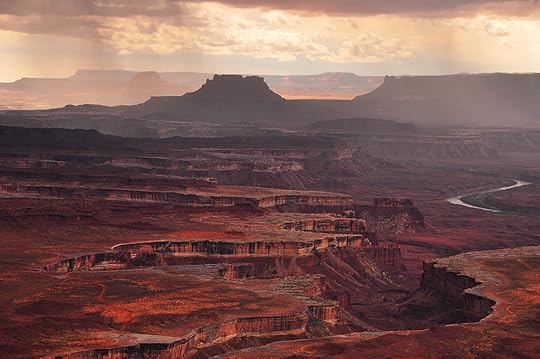
5
Canyonlands
The Colorado and Green Rivers managed to carve one hell of a landscape out of southeastern Utah, and they managed to do it in a relatively accessible place. Canyonlands is near Moab, by the Colorado border, and is well positioned to be part of a much larger trip.
Photo: Bill Gracey

6
Desert skies
Those of us who live in East Coast cities don’t get to spend much time looking up at the stars. There’s too much light pollution, and anyway, our views are often blocked by trees or buildings. The middle of the American desert, though, is one of the best places in the country to go stargazing. There’s virtually no light pollution, and there isn’t much that can block your view.
Photo: John Chandler
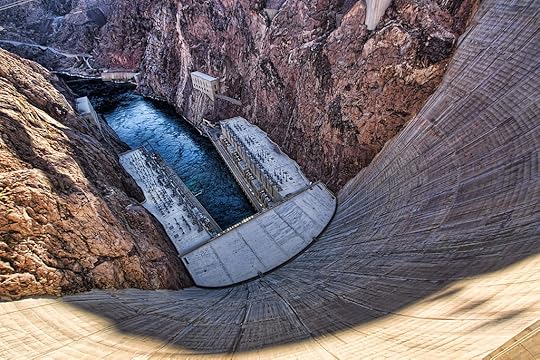
7
Hoover Dam
One of the most impressive feats of modern engineering also happens to be pretty cool to look. The Hoover Dam was built in the '30s during the Depression, and now supplies vast swaths of the Southwest with hydroelectric energy. It’s also responsible for giving us Lake Mead, which is basically just an overflowed portion of the Colorado River.
Photo: Nicolas Pelletier

8
Yosemite
One of the country’s oldest national parks is also one of its most beautiful. Though Yosemite is a little further to the north than most of the items on this list, it’s perhaps one of the most worthwhile detours on your trip.
Photo: Jeff Krause

9
Valley of Fire State Park
Valley of Fire State Park in southern Nevada sits on the edge of Lake Mead to the north of Las Vegas. It gets its name from the red sandstone formations that give the area spectacular coloring in the right sunlight.
Photo: James Marvin Phelps

10
Los Angeles
It seems almost unfair to group all of LA under a single category (and to not include San Diego on this list at all), but there’s just too much to cover in America’s second largest city. There are the beaches, there are the college towns, there are the movie studios, there are the ghettos, there are the mega-rich suburbs—LA has virtually everything.
Photo: Michael Chen
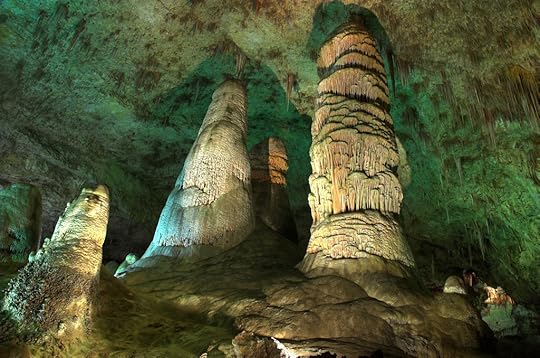
11
Carlsbad Caverns
This is a great stop for your trip if you’re coming on a southern route from Texas. Carlsbad Caverns is in southern New Mexico and is truly spectacular. The caves were actually discovered and promoted by a young boy by the name of Jim White, who was younger than 16 when he started exploring the caves on his own.
Photo: SamuraiCatJB
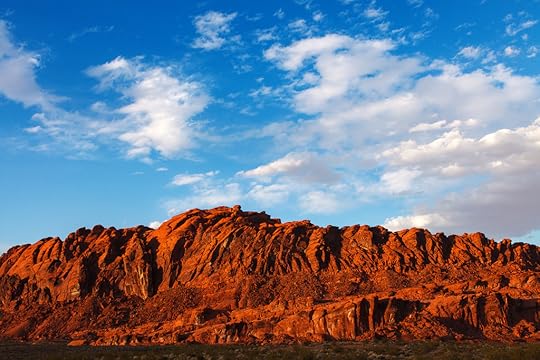
12
The Mojave Desert
The Mojave Desert spreads across southeast California, southern Nevada, and northwest Arizona. On the whole, it makes up a relatively small portion of the Southwest, but it also includes some of its most fantastic places: Death Valley, Joshua Tree, and the rim of the Grand Canyon. One of the countries most infamous cities lies in the desert as well: Las Vegas.
Photo: James Marvin Phelps

13
Moab
Moab is one of the best cities in the country for outdoors types. It’s in eastern Utah near the Colorado border; just a few hours east are the Rocky Mountains, and it's next to two of the most spectacular national parks in the country: Canyonlands and Arches. It’s known for its mountain biking, extreme sports, and hiking.
Photo: Zach Dischner

14
White Sands
White Sands is a set of white sand dunes in the Tularosa Basin in southern New Mexico. It sits next to the White Sands Missle Range, a rocket testing facility that has kept the site from becoming a World Heritage Site, but the area is beautiful regardless and is designated a US National Monument.
Photo: Sathish J
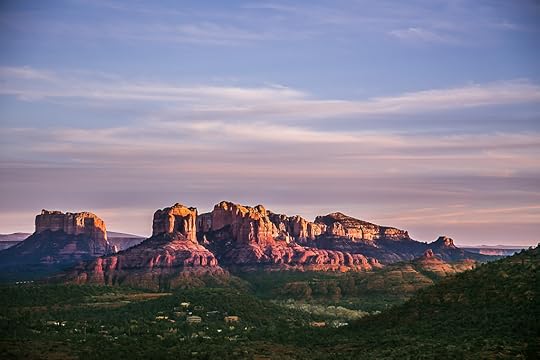
15
Sedona
Sedona is a great city to wrap into a trip to Phoenix and the Grand Canyon. It sits in the center of the state of Arizona and is known for its incredible rock formations and a vibrant arts community. Like pretty much all of the places on this list, it has incredible hiking.
Photo: Steve McClanacan

16
Arches
Arches National Park is named (obviously) after its many eroded sandstone arches. The park is one of the best places in the world for landscape photographers, and is also known for its great rock climbing and astronomy.
Photo: Howard Ignatius

17
Las Vegas
Las Vegas is both famous and notorious for its excesses: the casinos, the partying, the lax marriage laws, the hotels, the shows. All of this excess makes it one hell of a fun place to visit.
Photo: Joey Lax-Salinas

18
Death Valley
The lowest elevation and the highest recorded temperatures in the United States can be found in the same place: Death Valley. This national park, which straddles the California/Nevada border, is also fairly close to Mount Whitney, the highest point of elevation in the continental United States.
Photo: John Bruckman

19
Monument Valley Navajo Tribal Park
Monument Valley, as shown in this timelapse movie by Gavin Heffernan and Harun Mehmedinovich, is a truly staggering sight.
Photo: Delphine Vezmar

20
Empty roads and gorgeous views: Route 163 and Route 50
Monument Valley, viewed here from US Route 163, is considered one of the most iconic areas of the American West, being a popular place for shooting Westerns back in Hollywood’s heyday. Another famous road is US Route 50 in Nevada, which is known as “The Loneliest Road in America.”
Photo: Heitere Fahne
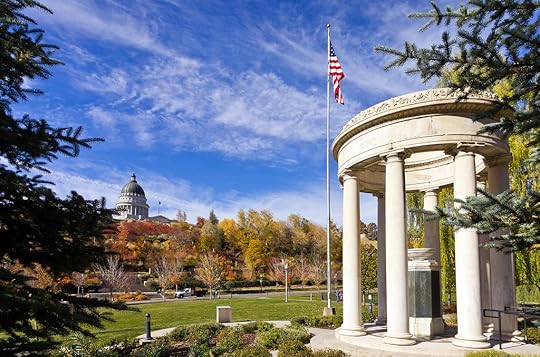
21
Salt Lake City
The headquarters of the Mormon community is in Salt Lake City, and that makes it not quite like any other in the United States. It’s a fairly culturally conservative place, but it also contains some serious punk, hip-hop, and metal scenes when it comes to music. Oh, and it’s surrounded by an absolutely beautiful landscape.
Photo: Photo Dean
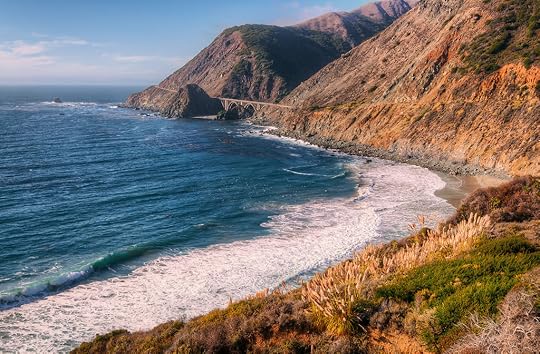
22
Pacific Coast Highway
One of the best drives in the country is along the California Pacific Coast. The Pacific Coast Highway (aka State Route 1) runs between Mendocino in NorCal and Orange County. Some of the best views are between San Francisco and Los Angeles.
Photo: Tours Departing Daily

23
Bryce Canyon
Bryce Canyon National Park in southern Utah is known for its hoodoos, strange geological structures that form within this natural amphitheater. It’s one of the most remote national parks, and as a result, is significantly less crowded than a lot of the other parks on this list.
Photo: Wenjie Qiao

24
Mesa Verde National Park
Mesa Verde National Park in Montezuma County, Colorado, is best known for its ancient Pueblo cliff dwellings, pictured here, and is absolutely worth a visit, especially if you’re road tripping across the Rockies.
Photo: Michal Mikulicz

25
Black Canyon of the Gunnison
One of the lesser-known (and newer) national parks in America, the Black Canyon of the Gunnison sits in western Colorado. It’s a great spot to visit if you’re a climber or a bird watcher.
Photo: Jesse Varner

Matador Network's Blog
- Matador Network's profile
- 6 followers




